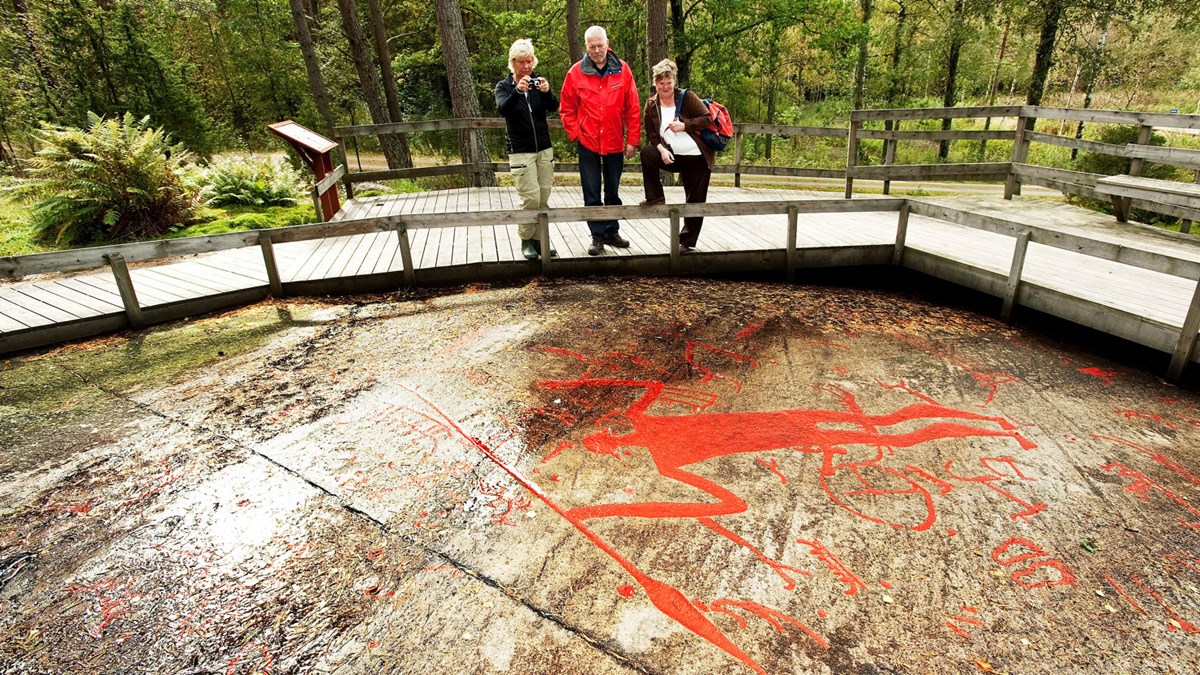The rock carvings at Litsleby

The carvings at Litsleby are two kilometres south of Vitlycke Museum. The panel is dominated by a warrior 2.3 metres tall, known as the Spear God.
There are roughly 250 images on the Litsleby panel. Most of them were carved in the late Bronze Age and Early Iron Age. The panel was first mentioned in 1751, this being very the first written reference to a carving in the World Heritage area. As well as the painted carvings there is an unpainted surface with carvings to the right of the wooden ramp.
The Spear God
In the middle of the panel a warrior 2.3 metres tall is carved into the rock. The fact that the man covers several older carvings leads us to believe that he is one of the last – if not the very last – of the images on the panel. Human figures of this size are very rare; only the “shoemaker” at Brastad approaches the warrior in size. The man has sometimes been taken to be a God of war. Perhaps we are looking at an early Odin, or Tyr, on this panel.
Boats from the Iron Age
There are several boats here that were carved during the Early Iron Age. The earliest examples of Early Iron Age boats are two almost identical ships 2.8 metres in length. They are very reminiscent of the “Hjortspring” boat found in a bog in Denmark in the 1880s. The Hjortspring boat was laid in the bog as a sacrifice in the Early Iron Age. It is the only surviving boat resembling the boats of the rock carvings, making it an important link in our understanding of the carvings.
The Battle of Tegneby
From the Litsleby panel a path leads up into the woods. After about a hundred metres you reach an almost horizontal carved surface – the Tegneby panel. On the rock can be seen what appears to be a battle scene. Horsemen with spears and square shields are riding towards each other. The shields are of a type used during the Early Iron Age and this enables us to date the carving to this period. Above the panel there is a grave, a stone-setting, also from the Iron Age.
Direcions
Drive 1 km south from the museum towards Kville, turn right and drive 1 km to the car park on the left. The carving has wheelchair access and a tactile information board.






